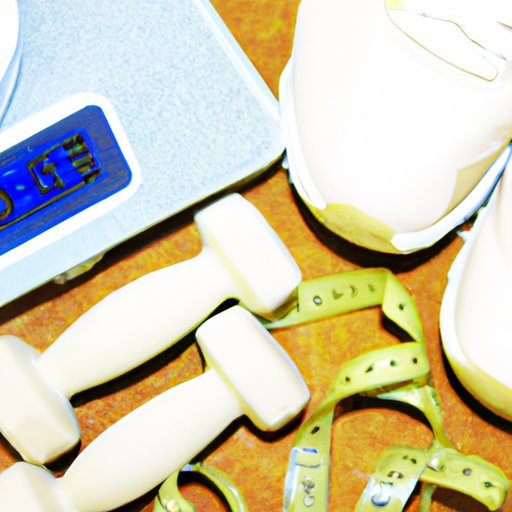
Introduction
Excess weight in the thighs can be frustrating and cause negative effects on both health and body image. However, with the right approach, it is possible to lose weight in the thighs and improve overall well-being. This article serves as a guide to help readers successfully shed those stubborn thigh pounds and feel confident in their bodies.
Healthy and Balanced Diet
A healthy and balanced diet is critical in the process of weight loss. Consuming the right foods promotes weight loss in the thighs and helps maintain a healthy body weight. Fruits, vegetables, whole grains, lean proteins, and healthy fats are ideal for weight loss in the thigh area. To incorporate these foods into a daily meal plan, one can start by substituting unhealthy snack options with fruits and vegetables, consuming lean meats, and reducing the amount of processed foods. Eating a variety of different foods with a balance of carbohydrates, proteins, and fats can lead to a sustainable diet over time.
Targeted Exercises and Strength Training
Targeted exercises and strength training can aid in toning and sculpting the thigh area. Examples include squats, lunges, and leg presses that target specific muscle groups in the thighs and buttocks. It’s important to perform these exercises correctly to avoid any resulting injuries. Aim to perform these exercises at least twice or thrice a week, with enough repetitions and sets per session to help tone and strengthen the thigh’s muscles.
Cardiovascular Exercises
Cardiovascular exercises promote overall body fat loss, including in the thighs, which is a key factor to achieve weight loss goals. Effective cardio exercises include running, cycling, or swimming. The frequency of performing these exercises will depend on each person’s individual weight loss journey – at least 30 minutes per session, either daily or every other day can yield great results. Remember, the duration of the cardio session is equally important to achieve optimum results.
High-Intensity Interval Training and Functional Training
High-intensity interval training (HIIT) or functional training can significantly aid in burning fat and increasing muscle tone. Exercises such as burpees and jump squats use a range of muscle groups to increase the intensity of each workout. HIIT workouts can last between 20 to 30 minutes, depending on the fitness level of an individual. Functional training focuses on movements that mimic daily activities, such as bending and carrying heavy items. Try incorporating HIIT or functional training sessions twice a week to optimize results in reducing thigh weight.
Avoid Consuming Certain Foods
Saturated fats, sugar, and excessive carbohydrates can contribute to stored fat in the thigh area, hence, avoid such foods to minimize the accumulation of unwanted fat. Some examples of foods to avoid include processed snacks, sugary drinks, and packaged meals. Instead, opt for healthier alternatives such as nuts, seeds, and whole grains. It’s also important to reduce alcohol and caffeine intake as these substances can increase the cortisol levels in the body, triggering the accumulation of unwanted fat post-consumption.
Get Enough Sleep
The science is clear that lack of sleep can contribute to poor weight management; it hinders the body from burning fat and inhibits muscle growth. Adults require seven to nine hours of sleep per day, although individual needs may vary based on lifestyle and other factors. To help improving the quality of sleep, a routine sleep schedule, regulating a calm sleep environment, turning off any electronics before bedtime, among other methods, are effective techniques to ensure quality sleep.
Incorporate Stress-Reducing Activities
Stress can lead to weight gain and cellulite development in the thighs. Incorporating stress-reducing activities in daily routines, such as meditation, yoga, or deep breathing exercises, can lower cortisol levels that contribute to weight gain. Activities such as stretching, massage, or taking time for personal hobbies can also play a role in reducing stress levels. The key is to find activities that help to relax the body and mind, and which can be done as part of a regular routine.
Conclusion
Incorporating healthy habits to reduce the weight of the thighs can be a challenging endeavor, but it is achievable with the right approach and mindset. A blend of healthy eating habits, targeted exercises, cardiovascular workouts, and stress-management can lead to sustainable weight loss in the thighs. It’s important for readers to remember that there is no one-size-fits-all solution when it comes to weight management, and every individual’s journey is unique. By applying these tips consistently and with patience, readers can successfully achieve their desired weight goals and maintain a healthy lifestyle in the long term.




